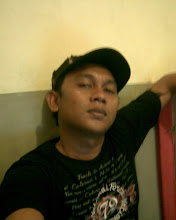Digestive System Structure Of a Special Animal Ruminansia
1. Incisor (Insisivus) has the form of a pin to be food plants such as grass.
2. Back teeth (Molare) has the form of a flat and Highlights.
3. Jaw can move sideways to grind food.
4. Structure has four side rooms, which are: Rumen, Retikulum, Omasum and Abomasum.
The pattern on the animal digestive systems are generally the same as the men, the mouth, consisting of, faring, esofagus, stomach, and intestine. However, the structure of the digestive equipment occasionally between different animals that one with the other animals.
Cattle, for example, have the order of the teeth as follows:
3 3 0 0 0 0 0 0 maxilla
C I M P I C P M tooth type
3 3 0 4 4 0 3 3 mandible
I = incisor = insisivus
C = kaninus = canine
P = premolar = teeth front
M = molar = teeth back
Based on the order of the teeth above, that a cow (ruminant animal) does not have the top of the incisor and canine, but the molar more than the people in accordance with its function to chew fibrous food, the composer of plant cell walls consist of 50 % cellulose.
If compared with the horse, the cow is faring better short. Esofagus (throat) in cows is very short and wide and more capable berdilatasi (mernbesar). Esofagus thin wall is estimated to vary in length and about 5 cm.
Cow stomach is very large, estimated at about 3 / 4 dart fill the belly cavity. Stomach has an important role to save the food while eating in the back (do both). In addition, also occurs in the stomach and fermentation process of decomposition.
Ruminansia side consists of 4 parts, the rumen, retikulum, omasum, and abomasum with the size of which varies according to age and food alamiahnya. Rumen capacity 80%, retikulum 5%, omasum 7-8%, 7-8% and abomasum. The division of this seen from the form of a strained muscle at the time sfinkter berkontraksi.
Food from the esophagus go rumen function as a temporary warehouse for the food consumed. Occur in the rumen digestion of protein, polisakarida, and cellulose by fermentation selulase enzyme produced by bacteria and certain types of protozoa.
From the rumen, the food will be forwarded to retikulum and food in this place will be a lump-lump that is still rough (called a bolus). Bolus akan kan vomiting in the back to the mouth to be chewed a second time. Akan food from the mouth to be swallowed back to ornasum. In the omasum that there is a gland that produces the enzyme mixed with the bolus. Finally bolus will be forwarded to the abomasum, the stomach is actually in place and this process is still going bolus of chemical digestion by enzyme.
Selulase produced by microbes (bacteria and protozoa) akan remodel cellulose into fatty acid. However, resistant bacteria do not live in the abomasum as a very low pH, this result, the bacteria will die, but it can be to digest source of protein for ruminant animals. Thus, this animal does not need such as essential amino acids in humans.
Animals such as horses, rabbits, and Marmut not have any structure as in the cow stomach for fermentation seluIosa. The process of fermentation or decomposition by the bacteria occurred in sekum that contain many bacteria. The fermentation process is not as effective as the sekum fermentation occurs in the stomach. As a result dirt horse, rabbit, and more rough Marmut because the process of cellulose digestion occurred only once, namely at sekum. While in the digestive process of cows occurred twice, namely in the stomach and sekum who both made by certain bacteria and protozoa.
In the rabbit and Marmut, dirt that has left the body is often eaten again. Sewage that has not tercerna yesteryear still contains a lot of food substances, which will digest more by rabbits.
Sekum on consumer plants is greater than the sekum karnivora. This is caused by food herbivora large volume and weight pencernaannya process, whereas in karnivora small volume of food and digestion takes place quickly.
Intestine in cattle is very long, its small intestine can reach 40 meters. This is influenced by food which consists mainly of fiber (cellulose).
Selulase enzyme produced by bacteria are not only working for mencerna cellulose into fatty acid, but can also produce bio-gas in the form of CH4 can be used as an alternative energy source.
Not closed the possibility that the bacteria in sekum akan out of the body of organisms with feses, so that in the feses (feces) animals that contain organic material and can be described akan release CH4 gas (bio-gas).



0 comments:
Post a Comment